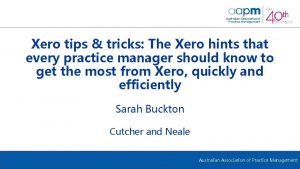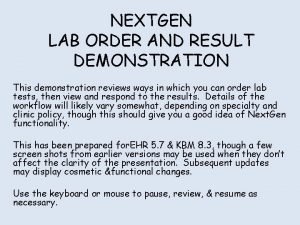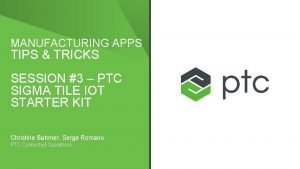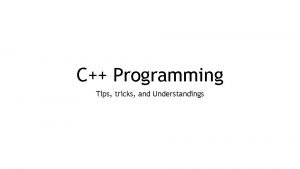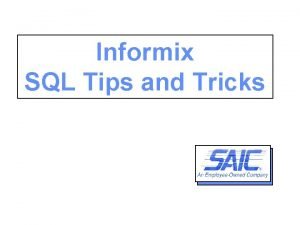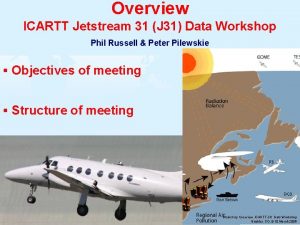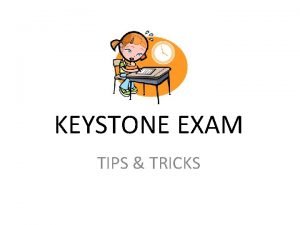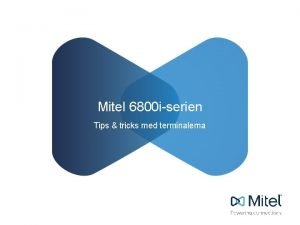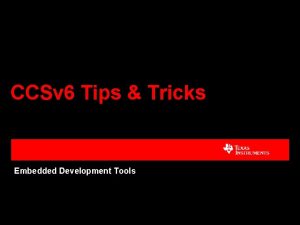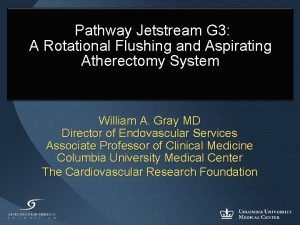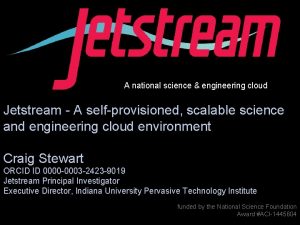Jetstream Atherectomy Data Tips and Tricks Nicolas W





















- Slides: 21

Jetstream Atherectomy: Data, Tips and Tricks Nicolas W Shammas, MD, MS, FACC, FSCAI President and Research Director Midwest Cardiovascular Research Foundation

Disclosure Nicolas W Shammas, MD, MS, FACC, FSCAI Research and Educational Grants Bard Boston Scientific Intact Vascular Venture. Med Group Advisory Board/Consultant Intact Vascular Speaker Bureau Boston Scientific Janssen Boehringer Ingelheim Novartis Intact Vascular Bard

Vessel Preparation • Theoretical advantages: Adjunctive Atherectomy Mechanical • Debulk plaque • Improve vessel compliance 1, 2 Improve procedural success Biological • Increase drug transfer to tissue 1, 3 Enhance biological effect of drug 1. Shammas NW. Int J Angiol. 2013; 22(1): 1 -8. 2. Moses JW, et al. Rev Cardiovasc Med. 2004; 5 Suppl 2: S 16 -21. 3. Tellez A, et al. Euro. Intervention. 2014 Dec; 10(8): 1002 -8.

Jetstream Clinical Studies Pathway PVD study Jetstream Calcium Study 172 patients at 9 European centers 26 patients with moderately to severely calcified femoropopliteal artery lesions 51% had lesions with moderate to high calcium, 31% total occlusions 74% TLR-free at 12 months Patients with diabetes had MAE rates and clinical improvement similar to those without diabetes Lumen area increased significantly after treatment with Jetstream; calcium reduction was responsible for 86% of the lumen increase JET Registry Post-market registry of 241 patients at 37 US centers Mean lesion length 16 cm, 48% calcium grade 3 or 4, 36% total occlusions 22. 8% 12 -month restenosis rate 81. 7% TLR/TVR-free rate at 12 months Zeller et al. J Endovasc Ther 2009; 16: 653– 662. Sixt et al. Ann Vasc Surg 2011; 25: 520 -529. Maehara A, et al. Euro. Intervention 2015; 19; 11: 96 -103. Garcia LA, et al. LINC 2017

JET-SCE Jetstream + DCB vs Jetstream + PTA Retrospective study of patients receiving Jetstream atherectomy to treat femoropopliteal obstructive disease • N=75 • Treated Apr 2012 -Dec 2014 adjunctive PTA (N=50) • Treated Dec 2014–Jul 2016 adjunctive DCB (N=25) • Median treated length (p=0. 053) – Adjunctive PTA: 15 cm – DCB: 10 cm KM Estimate for Freedom from TLR Jetstream + DCB vs Jetstream + PTA +DCB +PTA TLR rates at 16 months were significantly reduced with Atherectomy with adjunctive DCB (94. 4%) compared with Atherectomy with adjunctive PTA (54. 0%) (94. 4% vs 54%; p . 002) Shammas NW, et al. Cardiovasc Revasc Med. 2018. https: //doi. org/10. 1016/j. carrev. 2018. 02. 003

JET-RANGER Clinical Study Overview: JET-RANGER (Investigator sponsored IDE)* Enrolling Title JETStream Athe. Rectomy With Adjunctive Paclitaxel-Coated Balloo. N Angioplasty vs Plain Old Balloon An. Gioplasty Followed by Paclitaxel-Coated Balloon in Treating Compl. Ex Denovo Femo. Ropopliteal Arterial Disease (JET-RANGER) Study Chairman/ Sponsor Nicolas W. Shammas, MD Midwest Cardiovascular Research Foundation Objective Test the hypothesis that Jetstream atherectomy followed by DCB (Ranger or IN. PACT Paclitaxel Drug Coated Balloon) improves target lesion revascularization at 1 year follow-up when compared to balloon angioplasty followed by DCB in the treatment of femoropopliteal arterial de novo disease Study Design Prospective, multicenter, randomized study Jetstream + DCB vs PTA + DCB (2: 1 randomization) Patients 255 patients at up to 25 US sites Rutherford category 2 -4 and ≥ 70% de novo stenosis with: lesion length ≥ 10 cm, or chronic total occlusion (any length) in the SFA and/or popliteal artery, or calcification of ≥ 2 grade by PACCS Endpoints Effectiveness: Target Lesion Revascularization at 1 Year: intra-procedural bail out stenting of the index lesion is considered meeting a TLR endpoint. Safety: Major Adverse Events (MAE) at 30 days: unplanned amputation, total mortality or TLR at 30 days (TLR includes bail out stenting) Clinical. Trials. gov Identifier: NCT 03206762 *IDE approval received from the FDA

Femoral Artery ISR Porcine overstretched injury model Off Label Application in the US CE mark approved Partial overlapping stents, fully overlapping stents, Stent across branches B A Stents fully expanded A C Shammas NW et al. J Endovasc Ther. 2015 Aug; 22(4): 518 -24 B C

Jet. Stream ISR Feasibility Study • DESIGN: Prospective, feasibility registry at 2 US centers, evaluating Jet. Stream XC atherectomy (JS) in treating Femoropopliteal in-stent restenosis (FP ISR) • OBJECTIVE: To evaluate efficacy and safety of JS with adjunctive PTA (JS+PTA) and assess stent-device interaction using Angiographic Core Lab adjudication • PRINCIPAL INVESTIGATOR Nicolas W Shammas, MD, MS • SUBINVESTIGATOR Subhash Banerjee, MD • Angiographic Core Laboratory Beth Israel Deaconess Med Ctr Jeffrey Popma, MD 29 patients (32 limbs) enrolled at 2 clinical sites between October 2012 and August 2014 in the United States 32 limbs crossed intraluminally/JS+PTA Primary Efficacy/Safety endpoints at 1 mo (n=32) Stent Integrity evaluation per core lab (n=24) 1 patient died (2 limbs) 1 patient withdrew (1 limb) Primary Safety endpoint and TLR at 6 months (n=27 pts; n=29 limbs) Secondary effectiveness endpoint TLR at 1 year (n=27 pts; n=29 limbs) Shammas NW. J Endovasc Ther. 2016 Apr; 23(2): 339 -46

Clinical and Angiographic Variables Demographic and Clinical Age (mean) yrs Male Hyperlipidemia Diabetes Hypertension Current smoking Prior index lesion ISR Prior PCI Rutherford Category 0 3 4 5 On Aspirin On ADP-receptor antagonist 69. 9 37. 9 % 82. 8 % 41. 4 % 89. 7 % 41. 4 % 66. 0 % 48. 3 % 65. 6 % 12. 5 % 15. 6% 90. 6 % 75 % Angiographic Treated length mm Lesion Diam. mm Run-off vessels Stenosis Severity % Stenosis post JS % Stenosis post PTA % TASC C/D Blades Up run time min Blades Down run time min Treatment Interval min JS XC 2. 4 JS XC 2. 1 Mean Volume Aspirate ml Lesions > 30 cm/CTO Stent Fracture 1&2 19. 5 ± 12. 9 5. 3 ± 0. 8 1. 8 ± 0. 9 79. 6 ± 16. 3 45 ± 15. 5 20 ± 10. 7 62. 5 % 2. 5 ± 1. 6 2. 9 ± 1. 8 5. 1 ± 3. 3 78. 1 % 21. 9 % 230 25 %/25% 3/24 (12. 5%)

Freedom from TLR (excluding bail out stenting as TLR)

JET-ISR Trial (IIS-IDE) JET-ISR Trial Objective Evaluate use of Jetstream Atherectomy (JS) and adjunctive balloon angioplasty (JS +PTA) in the treatment of femoropopliteal ISR lesions in subjects with claudication or limb ischemia (Rutherford clinical category (RCC) of 2 -4) (lesion length ≥ 4 cm). Primary Investigator Nicolas W Shammas, MD, MS, FACC, FSCAI Subhash Banerjee, MD, FACC, FSCAI Study Design A prospective, multicenter, single arm study Subjects • Investigational Centers Up to 14 site in the U. S. Primary Efficacy Endpoint Target Lesion Revascularization (TLR) at 6 months • TLR defined as retreatment of the index lesion (extended 1 cm proximal and distal to the lesion) at 6 months Comparator arm is historic data from plain old balloon angioplasty derived from a Meta-analysis of the 3 published randomized trials 140 subjects treated with JS+PTA For the primary endpoint, intra-procedural bail out stenting of the index lesion is considered meeting a TLR endpoint. (ITT analysis) Primary Safety Endpoint Major Adverse Events (MAE) at 30 days: • Unplanned amputation • Total mortality • TLR at 30 days (TLR includes bail out stenting)

Tips and Tricks • • • Guide wires Wire Positioning Device size Selection Cutter Advancement/Device Removal Embolic filter protection Off Label: Approaching In-stent restenosis

Wires – Commonly Used: • • Spartacore (Abbott) Bare. Wire (Abbott): commonly used with the Nav-6 filter. Thruway Wire (Boston) Viperwire (CSI) – Avoid Use of: • Coronary hydrophilic wires; No support • GRAND SLAM wire – Peeling off wire coating

Wire Positioning • The wire needs to be positioned in a small tibial or peroneal vessel – Provides more stability to the JETSTREAM® cutter. • Do not wedge the wire at the end of a small branch or place it too far in a tibial vessel. Increases risk of perforation – Allow room for the wire to move with the device as this can still happen • Always check the wire position during forward cutting or backward rexing

Device Selection Cutter size: JETSTREAM®XC - 2. 1 mm/3. 0 mm 120 cm Vessel size 3. 5 -5 mm BD 3. 5 -4. 0 mm BD/BU 4. 0 -5. 0 mm - 2. 4 mm/3. 4 mm 135 cm Vessel size > 5. 0 mm Cutter size: JETSTREAM®SC - 1. 6 mm 145 cm Vessel size 2. 0 -2. 5 mm - 1. 85 mm 145 cm Vessel size 2. 6 -3. 5 mm - Avoid 1. 85 mm on origin of AT BD=blades down, BU=blades up

Cutter Advancement • 1 Liter saline flush bag has 1 mg of nitroglycerin and 5 mg of verapamil (avoid verapamil in patients with bradycardia). – Rotaglide if: restenotic long lesions, thrombotic lesions, long CTO or using spider Filter • Cutter is advanced very slowly. Always blade down first. • Advance 2 -3 mm forward, 1 mm backward (allow maximum aspiration and reduce distal embolization). • Once lesion is reached there is a change in speed and tactile feeling. • Do not push too hard against the lesion to avoid stalling of the cutter within the lesion • Use tactile and auditory feelings to monitor cutter speed

Cutter advancement in CTO • If CTO lesion and aspiration appears to have slowed: treat proximal lesion with BD followed by BU. Repeat same for mid lesion then distal lesion. Allow uninterrupted aspiration – Sometimes avoid treat most severe distal lesion until the end. The distal severe lesion may work as an “embolic protection

Use of Embolic Filter Protection with JETSTREAM • Wirion Filter – Recently approved by FDA for all atherectomy devices – Can be positioned anywhere on the wire – Locks on wire • Motion of wire=motion of filter – Pivotal Trial: WISE LE Shammas NW. JACC Cardiovasc Interv. 2018 Oct 8; 11(19): 1995 -200

JETSTREAM in In-stent Restenosis* • Blades down first (2 runs) • Blades up: Safety not established but has been used successfully in short studies – Avoid Blades up in the following situations: • Class III and IV fractures • Stent underexpansion • Severe bends in the femoropopliteal segment or severe eccentric lesions creating wire bias toward the stent • Long lesions that cannot be protected with embolic filter * Off label use in the US

Conclusion • Jetstream is highly effective in a variety of lesions including severe calcium • Jet Registry demonstrated (with no DCB) good f. TLR 81. 7% in long lesions with significant calcium and total occlusions • Jetstream with DCB provides a highly promising combination to treat infrainguinal arterial disease (JET SCE) • JET RANGER will provide data on the value of Jetstream with DCB when compared to DCB only in a randomized, multicenter trial powered for superiority • Technique is critical for excellent outcome

Before Laser After Laser Thank You!!
 Csi atherectomy setup
Csi atherectomy setup Data analysis tricks
Data analysis tricks Xero tips and tricks
Xero tips and tricks Alteryx tips
Alteryx tips Next gen lab corp
Next gen lab corp Kronos tips and tricks
Kronos tips and tricks Igcse english tips and tricks
Igcse english tips and tricks Homework
Homework Navision tips and tricks
Navision tips and tricks Chemdraw stationery document
Chemdraw stationery document Alma analytics tips and tricks
Alma analytics tips and tricks Magento 2 tips and tricks
Magento 2 tips and tricks Stata tips and tricks
Stata tips and tricks Matlab tips and tricks
Matlab tips and tricks Ptc manufacturing apps
Ptc manufacturing apps Accessibility tips and tricks
Accessibility tips and tricks Google scholar tricks
Google scholar tricks Qlik sense tips and tricks
Qlik sense tips and tricks Gp tips and tricks
Gp tips and tricks Stages of vacuum forming
Stages of vacuum forming C programming tips
C programming tips Accounts payable tips and tricks
Accounts payable tips and tricks


